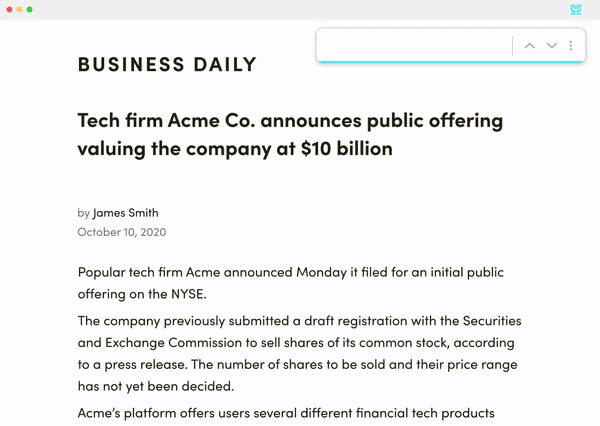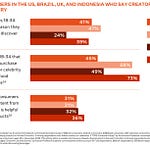Good Morning and welcome back. I hope you all got a chance to relax, reflect, and prepare for the year to come. Let’s hope this one’s a lot better.
If you’re reading this but haven’t subscribed, make sure to do so here.
🎟️ Putting the “fun” in NFTs
To most of you, the below GIF is nothing more than an animated pair of sneakers. But for a select few, this is a valuable digital asset worth tens of thousands of dollars.
Last month, one person spent 22 Ethereum ($13,331 at the time of sale and $20,702 at the time of writing) at auction for the X Evolution NFT edition, a pair of AI-designed sneakers brought to life by the team at RTFKT Studios.
“The X auction opened on Nov. 19 and lasted for 10 days on a new platform that RTFKT built. However, the shoe that bidders saw on the 19th was just a plain white high-top. As bids topped a certain amount of ETH, the design would change – a splash of paint at a time.
No one knew what the shoe would look like at its 10th and final “evolution,” and that remains a mystery: The winning 22 ETH was only good enough for the sixth evolution. The final evolution was set at a threshold of 58 ETH.” - CoinDesk
The purchase also included a 1/1 custom pair of physical sneakers, an unlockable Snapchat lens, and an avatar skin to wear in the The Sandbox metaverse.
If you feel lost, don’t worry. Let’s backtrack.
What is an NFT?
NFT stands for a non-fungible token. In order to fully understand how NFTs work, you’ll need to have a basic understanding of blockchain technology.
Blockchains are distributed databases used to securely store data and information in a publicly accessible way. Since these databases are distributed across multiple sites in a computer network, there is no need for a middleman. The most well known use of blockchain technology is Bitcoin, a decentralized digital currency used to make safe, anonymous, and verifiable payments.
Bitcoin is considered a fungible currency because, like the USD, it can be exchanged for another token (or dollar) of the same value. This means that the one dollar bill in your wallet is worth the same as the one dollar bill in mine. Fungible currencies are also easily convertible. One dollar can quickly be converted to four quarters.
It’s very important to note that NFTs are not a form of currency, but rather a digital token of information stored as a database entry in the blockchain. These tokens are unique, noninterchangeable, and can be used as a reliable and verifiable proof of ownership vehicle.
Where can NFTs be used?
Art & Collectibles - An NFT can be used as a certificate of authenticity for frequently counterfeited original paintings, sculptures, sneakers and more. After being verified by an independent authenticator, a token can be created for a specific piece of art and transferred with ownership once the item is sold.
This also works with digital art:
“Because of the legitimate scarcity made possible by blockchains, buyers can rest assured that the art they purchase is, in fact, rare. This gives digital art real value that we’ve never seen before.” - Decentraland.org
Like physical art, the value is in the eye of the beholder. Wealthy folks could soon be swapping out the Picasso originals in their living rooms for digital screens bearing AI-designed abstracts. As demand for these collectibles grows, digital art curators and galleries will continue to emerge, giving birth to an entirely new industry and alternative asset class.
Gaming - Much of Fortnite's $2.4 billion in 2020 revenue came from in-game cosmetic purchases of skins, dances, and emotes. NFTs can be used to resemble these in-game items and move them from one game to another. They can also be used to build singular, unified virtual identities and share public player records.
Ticketing - NFTs can be used to store a variety of ticket information like time, place, and seat location, while also assuring that you’re in possession of a real ticket. I’m very bullish on this use case as the virtual event industry continues to grow.
Identification - Passports, birth certificates, and driver licenses are all forms of identification that can be digitized through non-tradable NFTs. While this is still a ways away for the US, China is already taking steps towards digital identification as part of the plans for its blockchain-powered smart cities.
Bottom Line: NFTs have the potential to disrupt multiple industries through their ability to digitize the provenance process and serve as an alternative investment asset. The technology is still early, but the upside is there. Pay attention to these over the next five years.
Found this interesting? Subscribe now for more ideas and insights on emerging tech and the future of entrepreneurship.
🎙️Crashing Up Podcast
Say hello to Jesse Kay.
Jesse is CEO of Vyber Media, a digital consulting agency helping Fortune 500 brands and professional athletes better connect, engage and monetize their relationships through social media and digital marketing strategies. Notable clients have included Fanatics, Steiner Sports, and pro skater Paul Rodriguez.
He also hosts “Trendsetters with Jesse Kay,” a podcast focused on sharing practical lessons and stories from some of the best minds on the planet to help inspire young men and women to become tomorrow’s entrepreneurs. He’s had an amazing slate of past guests such as Mark Cuban, Jack Dorsey, Erika Nardini, Adam Schefter and Gary Vaynerchuk.
This episode covers:
Why an athlete’s popularity is no longer based only on their in-game performance
How Jesse and hundreds of other college students started a non-profit and raised $125,000+ for COVID relief
How to navigate your brand through the rapidly shifting digital landscape
🎧 Listen in by clicking the audio player at the top of this email.
Have a question for Jesse? You can send him a DM on Instagram or text him at 201-298-9171.
🧰Tool of the Week
The best productivity tools have three qualities:
Save Time
Improve Workflow
Low Barrier to Entry
Many great tools fulfill two of the three, but very few check all of the boxes.
Hebbia is one of these few.
Hebbia is an in-page search chrome extension that analyzes long documents and webpages in seconds, understands your questions, and highlights the answers relevant to you.
It’s like if Google and Cmd+F had a baby. A really smart, AI-powered baby that saves you time by reading and finding the answers to your questions. You can test it out here.
Enjoyed today’s edition? Let me know by selecting one of the links below. If you didn’t like it, I’d love to hear why and what you’d like to see to make it more enjoyable.
If you’re new here and want to look back on some old editions, check out Alone Together and my interview with Toby Howell from the Morning Brew. You can also follow me on Twitter or check out randymginsburg.com for more writing.
Thanks for reading,
Randy















Share this post